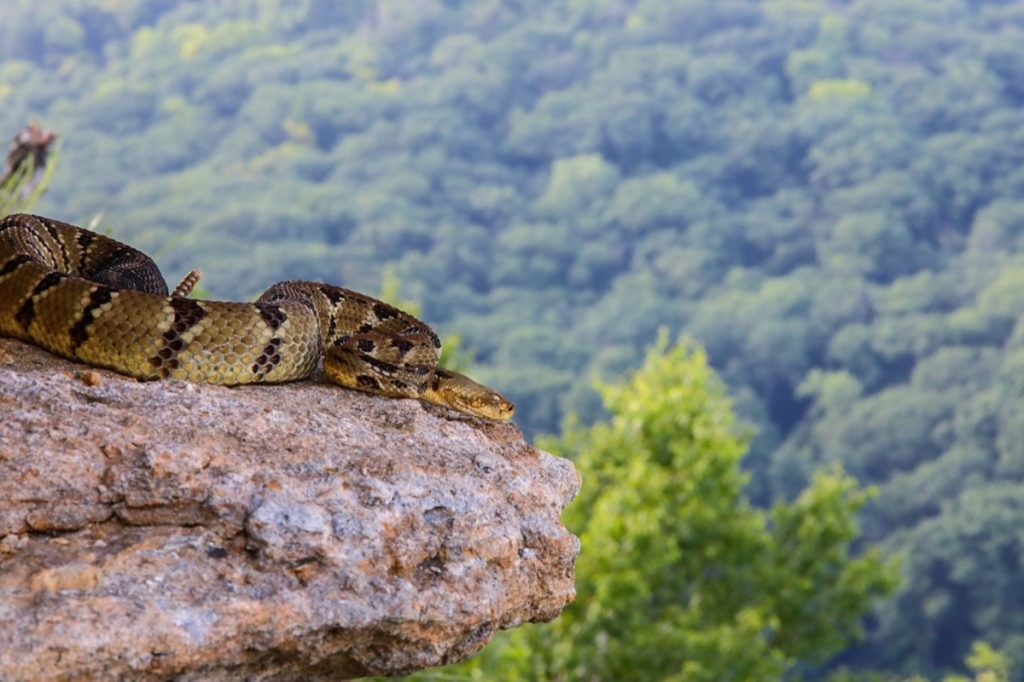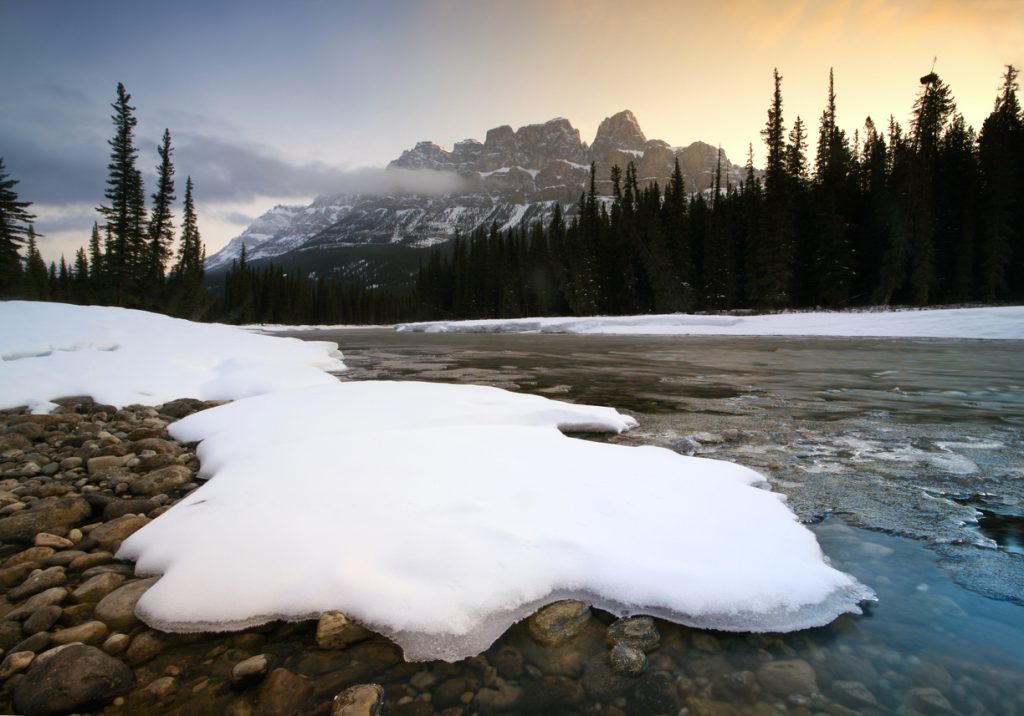This Is When You Should Watch Out for Snakes in the Winter, Experts Say
Just because it's low season for reptiles doesn't mean you'll never see them.

Winter is a time when people head indoors while animals tend to head south or into hibernation. In many northern or cooler climates, this can include snakes and other reptiles that become less active during the chillier months of the year. It would be only natural to assume that it's practically impossible to come across one in your yard or on a nature walk anytime before the flowers start to bloom, but as it turns out, crossing paths with a reptile during the coldest season is not entirely out of the question. Read on to see when experts say you should watch out for snakes in the winter.
READ THIS NEXT: Watch Out for These Venomous Snakes "Suddenly Invading," Experts Caution.
High season for snake sightings and bites falls during the warmer months.

The first hints of warm weather in spring usually signify a significant change in how we plan activities and spend time outdoors. Of course, the same can be said for snakes, who become more active as the mercury rises because of how their physiology works.
"Snakes are cold-blooded, which means they can't regulate their body temperature. Instead, their body temperature varies depending on their environment," Nick Durieu from Senate Termite & Pest Control tells Best Life.
Of course, this makes it more likely for humans and reptiles to cross paths. The high season for snake bites falls during the milder and hotter seasons, typically beginning in April and stretching through October, according to the U.S. Department of Agriculture's (USDA) Forest Service. But come cooler weather, most species will start to slow down for the season.
"During the winter, when temperatures drop, snakes enter a state known as brumation," says Durieu. "But although it's similar to hibernation, snakes don't sleep throughout the entire season."
Experts say there is one time when you should watch out for snakes during the winter.

Even though they're not as energetic, winter doesn't entirely stop snakes from moving about. And in some cases, there's a good reason to keep an eye out for them.
"The brumation period generally begins between September and December and can last until March or April, depending on your area," says Durieu. "That means you usually won't see snakes during the winter, though they might come out for a few days if the weather gets warmer."
Durieu explains that an unseasonably mild spike in temperatures will usually rouse reptiles from their semi-slumber enough for them to be seen. "Snakes can actually wake up and forage for food or water, especially if temperatures rise, even for just a few days," he says
For more snake advice delivered straight to your inbox, sign up for our daily newsletter.
Temperatures must reach a certain level before snakes become active again.

Weather patterns can be a strange thing—especially lately, it seems. It's not entirely uncommon for there to be sudden shifts in temperature or precipitation patterns that feel out-of-season. When this manifests as an unexpected string of mild days in January or February, it provides the perfect excuse to get outdoors and enjoy the warmth. However, there is one temperature threshold that usually signals the return of active reptiles.
"Broadly speaking, many North American snakes become active if the weather dips above 60 degrees Fahrenheit for some amount of time," Charles van Rees, PhD, wildlife expert and founder of the Gulo in Nature Blog, tells Best Life. "If it's been cold that season they'll typically be pretty groggy though, and not much of a threat. You'll want to look out for them sunning themselves and trying to get their body temperatures up in warm places."
Brumation season isn't the same in all areas of the U.S.

Of course, not all regions of the U.S. experience seasons in the same way. While some may get four starkly different seasons with temperatures ranging from bitter cold to scorching hot, others remain more consistent throughout the year. Because of this, snakes may not take any winter break depending on where you live.
"In warm places like Arizona, snakes are active year-round. In colder areas like Pennsylvania, they brumate during the colder months," says Sholom Rosenbloom, owner of Rosenbloom Pest Control.
And it's not only cold temperatures that affect how a snake behaves: They can also be in danger of overheating if they're not careful. Rosenbloom says this is why some species of venomous snakes become more nocturnal during the height of summer and only begin hunting during daylight hours when cooler fall temperatures arrive.
"Snakes can be fully active only if their temperature measures between 68 degrees and 95 degrees Fahrenheit," he explains. "Since they are cold-blooded, their body temperature changes to match their environment, unlike warm-blooded humans where our body temperature is generally pretty constant. A snake would be physically unable to move if its temperature was below 39 degrees Fahrenheit. Additionally, most—but not all—will die if above 104 degrees Fahrenheit."





















